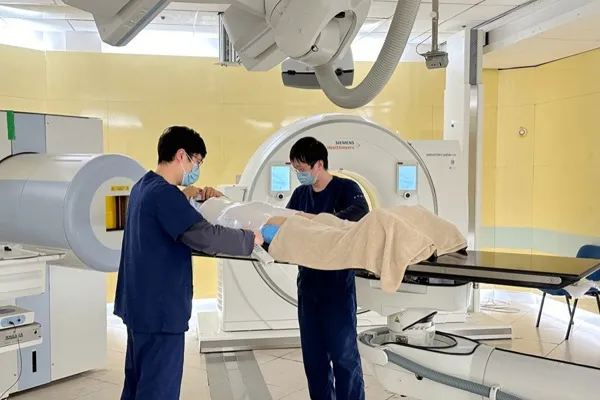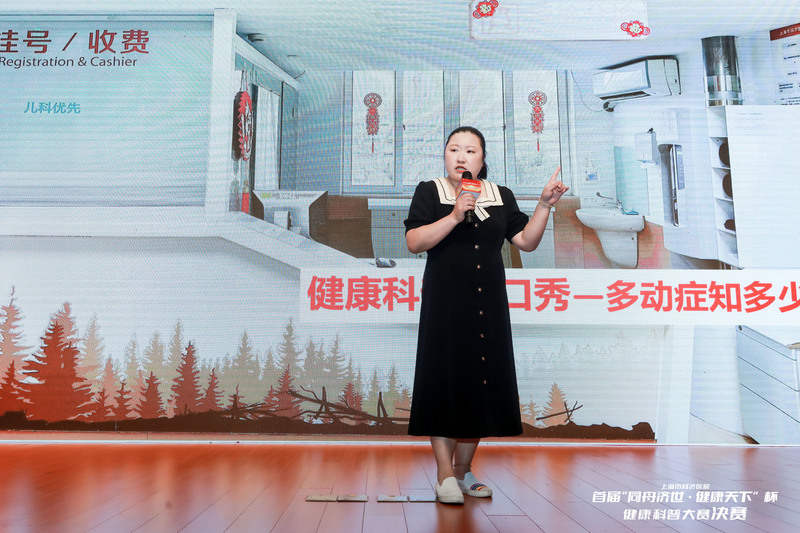Shanghai released the first domestic version of the proton and heavy ion patient survival report, with more than 6,700 patients accumulated in nine years of follow-up observation
Shanghai Proton and Heavy Ion Hospital celebrates its ninth anniversary today. Data released by the hospital show that as of the 7th, a total of 6,796 patients have been treated and discharged, with an average annual growth rate of 18%. Among them, 1,090 patients will be treated and discharged in 2023, the highest number since its opening. The first domestic version of the proton and heavy ion radiotherapy patient survival report was released at the same time. Comparative analysis by experts showed that the proton and heavy ion hospital has been on par with or exceeded the advanced level of similar international institutions in terms of clinical efficacy of key diseases and control of toxic side effects.
Continuously optimizing the "China Plan" for particle diagnosis and treatment, the annual treatment volume of the Proton and Heavy Ion Hospital has stably exceeded 1,000 cases for three consecutive years, ranking among the best among similar institutions in the world. Vice President Zhang Bo said: The types of diseases that the hospital can treat have expanded from 7 in the clinical trial stage to nearly 50, and the clinical standards have been updated to 66, basically covering common domestic malignant tumors. Among them, the number of patients with "52" key diseases accounts for three-quarters of the total.
What is the survival situation of patients after proton heavy ion therapy? Which types of patients have better results? The hospital simultaneously launched the first domestic version of the "Proton and Heavy Ion Radiotherapy Patient Survival Report", which was analyzed by experts.
Taking the most common type of liver cancer, 118 cases of inoperable hepatocellular carcinoma have been treated and followed up. The patient's 5-year survival rate and local control rate were 62.5% and 90.2% respectively. The efficacy is better than Japan's heavy ion radiotherapy, and the treatment-related side effects Reaction rate is low.
Taking nasopharyngeal cancer as an example again, 1,346 cases of nasopharyngeal cancer have been treated and followed up. Among them, the 5-year survival rate of patients with newly treated nasopharyngeal cancer reached 91.2%, which is better than 85% of photon radiotherapy, and no grade 3-4 oral mucosal reaction was seen during the treatment.
"We are the first in the world to use pure heavy ions to treat locally recurrent nasopharyngeal cancer. Compared with photon radiotherapy, the 5-year survival rate of patients has increased from less than 30% to 42.7%, and the incidence of nasopharyngeal mucosal necrosis has decreased from 40% to 16.9%. "Introduced Professor Jiang Guoliang, Director of the Clinical Technology Committee of Proton and Heavy Ion Hospital.
It is reported that this research result won the only Michael Goitein Best Clinical Abstract Award at the 61st Annual Meeting of the International Particle Therapy Collaborating Committee, and was unanimously recognized by international peers.
"Thank you to the hospital for giving me a chance to be reborn. I have been treated for ten years this year!" Mr. Zheng from Zhejiang returned to the hospital for follow-up yesterday. All his examinations showed good results and no signs of recurrence or metastasis. In 2014, Mr. Zheng suffered from primary hepatocellular carcinoma. The tumor was located close to the great hilar blood vessel and was inoperable. After several twists and turns, I came to the hospital and was successfully enrolled in the pre-opening clinical trial. After 4 heavy ion treatments, the tumor lesions gradually shrank until they completely disappeared.
In addition to key diseases, proton heavy ions are also satisfactory in the treatment of other diseases.
The 81-year-old Mr. Dai was diagnosed with soft tissue sarcoma. He had undergone eight surgeries in other hospitals before and had to face the risk of amputation. After he received heavy ion therapy 6 years ago, his condition was effectively controlled, his limbs and functions were preserved, and there is no sign of recurrence during follow-up.
When attaching importance to clinical efficacy, Proton and Heavy Ion Hospital coordinates the five-in-one coordinated development of "medicine, teaching, research, management, and service". Zhang Bo introduced that the hospital has increased its forward-looking clinical research and application support, and strives to strengthen the construction of “one library, one room, and one center”.
In terms of the transformation of independent research and development technology, the auxiliary treatment facilities such as the rotation treatment cabin and the isocenter rotation treatment chair developed by the expert team have been continuously upgraded and optimized. Among them, the 6mm ridge filter has been applied to proton radiotherapy for more than 90 patients, reducing the average beam time by 50%, achieving "improvement in quality and efficiency" in clinical diagnosis and treatment.
In addition, the Proton and Heavy Ion Hospital has innovatively set up a five-level physicist professional title system and promotion mechanism including chief physicist, with the intermediate level accounting for 48%, establishing the first generation of "localized" core talent team for particle diagnosis and treatment in my country.
In response to the upsurge in the construction of domestic particle centers, the hospital has also taken the initiative to meet the national strategic needs, innovatively carried out "order-based" compound talent cultivation with deep integration of institutions, and relied on Fudan University to continuously promote 10 batches of 87 master's degrees in radiation physics and biomedical engineering. At the same time, the country’s first on-the-job training and re-education course system for particle radiation physicists was established to lay a talent foundation for the promotion and development of domestic particle radiotherapy.
The reporter also learned that the Proton and Heavy Ion Hospital has been selected as the first batch of international medical tourism pilot institutions in Shanghai. More than 80 patients from the United States, the United Kingdom, France, South Korea, Singapore and other countries, as well as Hong Kong, Macao and Taiwan have received treatment.
In terms of price, as a designated hospital for "Shanghai Huibao", the hospital has assisted more than 560 insured patients to handle insurance claim procedures, with a cumulative compensation amount of more than 80 million yuan. The hospital has also cooperated with many domestic and foreign insurance companies to launch a variety of special proton and heavy ion insurance products to jointly promote the integrated development of medical insurance. So far, the proportion of patients through commercial insurance channels has reached nearly 40%.





